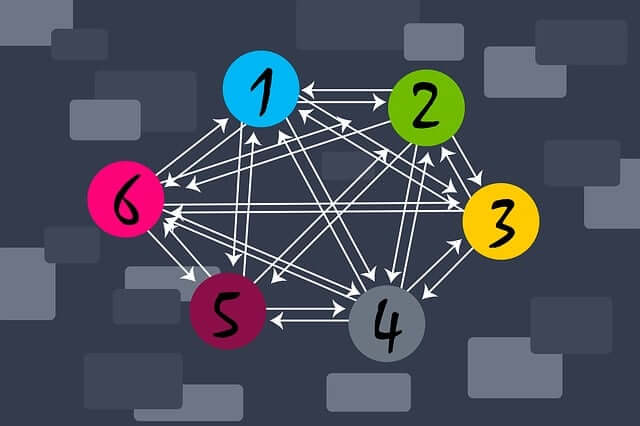Website design has evolved significantly over the years, from the early days of simple HTML-based pages to today’s sophisticated, interactive, and user-centered designs. As technology continues to progress, the future of website design is becoming an exciting area of speculation and anticipation. So, what does the future hold? How will user experiences evolve, and what technologies will define the next era of web design?
This article will explore the trends, technologies, and shifts that are likely to shape the future of website design, with a strong focus on how these changes will improve the user experience.
1. User Experience (UX) as the Core of Web Design
In the future, user experience (UX) will continue to be the primary focus of web design. The goal of every designer, developer, and business will be to ensure that the user’s journey on a website is seamless, intuitive, and enjoyable. Here’s how the future of UX in web design will evolve:
a. Personalization
As machine learning and artificial intelligence (AI) technologies improve, websites will become more personalized. Instead of static content, websites will adapt to each individual’s preferences, browsing history, and behavior. For example, a website might offer personalized product recommendations or adjust its layout based on the user’s past interactions.
b. Accessibility
Websites of the future will be designed with accessibility in mind for all users, regardless of their abilities. This will include more sophisticated support for screen readers, voice navigation, and keyboard accessibility. The web will become a place where people with disabilities can navigate with the same ease and efficiency as everyone else.
c. Minimalism and Clarity
The trend of minimalistic design will continue to dominate, but in the future, this will be more than just about aesthetics. Clean, clear, and distraction-free interfaces will help users focus on what matters. Websites will use fewer elements, more whitespace, and cleaner typography to create simple yet powerful user interfaces.
d. Interactive Design
Websites will be more engaging with interactive elements. Designers will focus on creating dynamic and interactive elements like scroll-triggered animations, microinteractions, and gamified features. This will keep users engaged and encourage them to spend more time on the site.
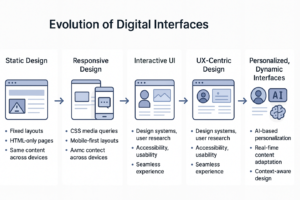
2. The Role of Artificial Intelligence and Automation
AI is poised to play a massive role in the future of web design. Here’s how AI and automation are transforming the industry:
a. AI-Powered Design
Design tools powered by AI will make it easier for non-designers to create websites. Platforms like Wix, Squarespace, and Webflow already offer AI-based website builders, and this trend will only grow stronger. Future AI tools will generate layouts, color schemes, and even suggest content based on the user’s preferences or the industry in which they operate.
b. Chatbots and Virtual Assistants
In the future, websites will integrate more advanced chatbots and virtual assistants. These AI-driven tools will not only help users navigate the site but also provide personalized customer support, recommend products, and guide users through complex processes in a human-like manner. Chatbots will be able to handle more complex queries and conversations than ever before.
c. Automation of Design Updates
Automation will also help streamline the process of updating websites. Instead of manually making changes to a website’s layout, structure, or content, designers and website owners will be able to use AI to make real-time adjustments based on user behavior and analy
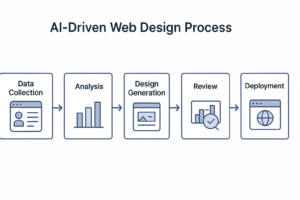
3. Voice User Interface (VUI) and Conversational Design
The rise of voice-activated assistants like Amazon’s Alexa, Google Assistant, and Apple’s Siri has paved the way for voice user interfaces (VUI) to become an integral part of web design. In the future, voice will be a key method of interaction on websites.
a. Voice Search and Navigation
As voice search continues to grow in popularity, websites will need to optimize their content for voice search. This includes focusing on long-tail keywords, conversational phrases, and natural language processing to make it easier for users to interact with websites through voice.
b. Voice-Activated Features
In the future, websites will incorporate voice-activated features such as voice commands for navigation, filling out forms, or making purchases. This will especially benefit users on the go, such as those driving or multitasking, making the web more accessible than ever before.
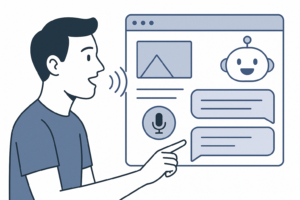
4. Augmented Reality (AR) and Virtual Reality (VR)
The integration of Augmented Reality (AR) and Virtual Reality (VR) into website design will offer users an entirely new way to interact with the web. These technologies will be particularly impactful in industries like retail, real estate, education, and entertainment.
a. AR Shopping Experiences
One of the most exciting developments in the future of web design is the potential for AR-based shopping experiences. For instance, users will be able to virtually try on clothes, see how furniture looks in their homes, or experience a product before making a purchase.
b. VR for Immersive Experiences
VR could create fully immersive website experiences, allowing users to step into a virtual environment and interact with it. This could revolutionize industries like travel, real estate, and entertainment, where users could take virtual tours or explore new locations in 3D space.
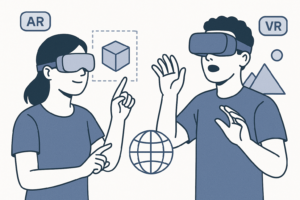
5. Mobile-First Design
With the ever-increasing use of smartphones to browse the web, mobile-first design will continue to dominate the future of web design. Websites will be built with mobile optimization as a priority, ensuring they are responsive, fast, and user-friendly on all devices, from small smartphones to large desktops.
a. Accelerated Mobile Pages (AMP)
AMP is a technology that ensures web pages load quickly on mobile devices. As the need for faster websites grows, mobile-first design paired with AMP will become even more important in the future, especially for businesses that rely on mobile traffic.
b. Progressive Web Apps (PWA)
Progressive Web Apps (PWAs) will play a key role in the future of mobile-first design. PWAs combine the best features of websites and native mobile apps, allowing users to enjoy app-like experiences directly in their browsers, without needing to download anything.
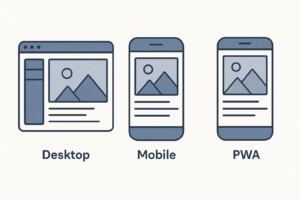
6. The Evolution of Web Design Tools
As the industry progresses, web design tools will become more powerful and user-friendly. These tools will allow both professionals and beginners to create stunning websites with ease.
a. No-Code and Low-Code Platforms
No-code and low-code platforms will make it easier for non-developers to build websites. These platforms will democratize web design, allowing anyone to create a website without needing extensive programming knowledge. Over time, these platforms will become even more sophisticated, offering more customization options and integrations.
b. 3D and Animation Tools
The rise of 3D and animation tools will make it easier to integrate interactive and engaging visuals into websites. This could include animated backgrounds, 3D models, and other dynamic content that enhances the user experience and engagement.
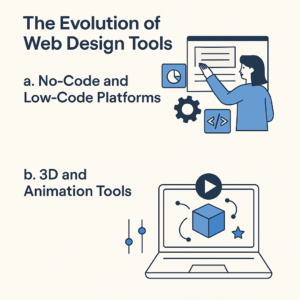
7. The Importance of Data-Driven Design
The future of web design will be heavily influenced by data-driven decisions. Web designers will rely on analytics, user feedback, and A/B testing to create websites that are not only visually appealing but also highly effective in meeting business goals.
a. Predictive Analytics
Predictive analytics will allow designers to anticipate user behavior and tailor websites accordingly. This could lead to more personalized experiences and increased conversion rates, as websites evolve to meet the needs of users before they even express them.
b. Heatmaps and Session Recordings
Tools like heatmaps and session recordings will become integral parts of the web design process. By understanding where users click, scroll, and spend the most time, designers can make informed decisions on how to optimize the layout and content for a better user experience.
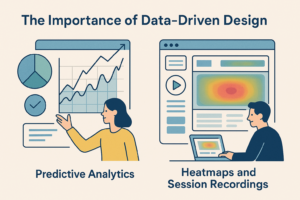
8. Sustainable Web Design
As the world becomes more environmentally conscious, sustainable web design will become an important consideration. Websites consume a significant amount of energy, and designers will need to focus on optimizing websites for lower energy consumption, faster loading times, and overall sustainability.
a. Eco-friendly Hosting
Sustainable hosting services powered by renewable energy will become the standard. Web designers will need to choose hosting providers that minimize their carbon footprint and prioritize green technologies.
b. Efficient Coding Practices
The future of website design will include a focus on efficient coding practices, which minimize the load time of websites and reduce unnecessary data usage. This will make websites not only faster but also more environmentally friendly.
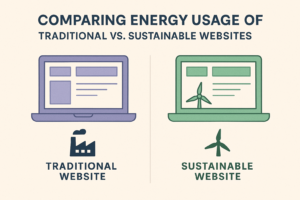
9. Advanced Security and Privacy by Design
As cyber threats evolve, security will be integral to design.
- Privacy-First Design: Complying with regulations like GDPR and CCPA through transparent data policies and cookie management.
- Authentication UX: Improved login experiences using biometrics, single sign-on (SSO), and passwordless systems.
FAQ on the Future of Website Design
- What will web design look like in 10 years?
In 10 years, web design will likely be more interactive, personalized, and immersive. AR and VR experiences will be common, and AI will play a significant role in personalizing the web for individual users.
- Will AI replace web designers?
AI will augment designers, not replace them. It will automate routine tasks, allowing designers to focus on strategy and creativity.
- Will websites still be important in the future?
Yes, websites will continue to be crucial in the future, but their design will evolve. With mobile-first design, voice interaction, and AR/VR technologies, the way we interact with websites will change, but the core need for an online presence will remain.
- How can I future-proof my website design?
To future-proof your website, focus on mobile-first design, speed optimization, user personalization, and accessibility. Stay up-to-date with emerging technologies like AI and AR to ensure your website remains relevant.
- How important will user experience be in the future?
User experience will continue to be the most important factor in web design. Websites that provide a seamless, personalized, and engaging experience will stand out, while those that ignore UX will fall behind.
Conclusion
The future of website design is undoubtedly exciting and full o potential. From AI-powered personalization to immersive AR/VR experiences, the next wave of web design will be focused on delivering exceptional user experiences. As technology continues to evolve, web designers will need to adapt and embrace new tools and techniques to stay ahead of the curve. By prioritizing user experience, accessibility, and personalization, the future of website design promises to be a transformative and dynamic landscape for both creators and users alike. Partner with a Top Website Design Agency in Cape Coral and Elevate Your Online Presence




